Before deciding what to do with weeds it’s important to identify them.
Depending on the type, you may need a different method of eradication.
And some weeds are harmful, requiring extra care to be around and handle.
You’ll even find that some are edible and nutritious if you fancy giving them a try.
We’ve compiled a list of the types of weeds you’re most likely to come across. With pictures and botanical names for easy identification.
35 Common Weeds
The 35 weed species below are further categorized into broadleaf weeds, grassy weeds, and sedges.
The examples include some of the most common weeds, as well as the most problematic.
Let’s dive in!
Dandelion
Botanical name: Taraxacum officinale
Category: Perennial broadleaf
Size: 2-18 inches
- Botanical Name: Taraxacum officinale
- Category: Perennial broadleaf
- Size: 2-18 inches
Dandelions are common garden weeds, often found growing on your lawn. Usually, dandelions first catch the eye in spring. But in some locations, they grow and flower all year round. And you’ll notice them immediately. Dandelions have a distinctive yellow flower that gives way to a fluffy seed head when it’s time for seed dispersal.
Dandelion weeds are harmless to have in your garden. And they’re good for the bee population. But they will spread. And like many types of weeds, dandelions take over if you leave them to grow.
Getting rid of dandelions can be difficult. And simply cutting them down won’t do the job. Dandelions have a thick taproot that grows around 12 inches deep in the soil. To stop the weed from growing back you’ll have to kill or remove the taproot.
Canada Thistle
Botanical name: Cirsium arvense
Category: Perennial broadleaf
Size: 2-5 ft. tall
- Botanical Name: Cirsium arvense
- Category: Perennial broadleaf
- Size: 1-3 ft. tall
Thistles are thorny weeds that are a prickly nuisance wherever they appear.
Thistles grow from seeds dispersed by the wind. And you can accidentally introduce them to your yard in topsoil and mulch.
Thistles typically grow between 2-5 ft. tall. And each thistle plant develops a large root system that can grow 20 ft. long in a single season.
Even a small piece of root in the soil can regrow a new plant. Which makes thistles tricky to get rid of. To control the spread you can cut off the unopened buds to prevent the plant from flowering and seeding. And you can use herbicides to kill the weed.
Field Bindweed
Botanical name: Convolvulus arvensis
Category: Perennial broadleaf
Size: The vines grow up to 6 ft. long
- Botanical Name: Convolvulus arvensis
- Category: Perennial broadleaf
- Size: The vines grow up to 6 ft. long
Bindweed is sometimes called wild morning glory due to its flowers. Its appearance sometimes encourages gardeners to let the weed grow. But it’s usually not recommended because bindweed is one of the worst weeds to get rid of.
Bindweed spreads through its roots and seeds. With the vines growing along the ground, and also climbing over obstacles such as fences or trees. It’s very difficult to eradicate bindweed once it takes over an area.
The big problem is the roots that grow 30 feet deep. Making it almost impossible to completely remove them. And even when you kill the plant above ground it grows back. Systemic herbicides can do the job. But it may take multiple applications to kill this persistent weed.
Broadleaf Plantain
Botanical name: Plantago major
Category: Perennial broadleaf
Size: 4-16 inches high
- Botanical Name: Plantago major
- Category: Perennial broadleaf
- Size: 4-16 inches high
Broadleaf plantain is also known as greater plantain, or white man’s foot — the name given to it by Native Americans who noticed its appearance wherever the settlers went.
This type of weed has a range of benefits for health and beauty. And you can eat the leaves raw or cooked.
But not everyone is happy to see plantain growing in their yard. In areas with thin grass and dry soil, the weed quickly spreads across the ground.
Fortunately, removing plantain is fairly easy. You can pull the plant, including the root system, with the help of a 3 claw weeder.
Nutsedge
Botanical name: Cyperus rotundus
Category: Perennial sedge
Size: Yellow nutsedge – up to 3 ft. tall. Purple nutsedge – up to 1-1/3 ft. tall.
- Botanical Name: Cyperus rotundus
- Category: Perennial sedge
- Size: Yellow nutsedge – up to 3 ft. tall. Purple nutsedge – up to 1-1/3 ft. tall.
Nutsedge loves waterlogged and compacted soil. And will invade thin lawns if the conditions are right.
It can be very hard to control. Nutsedge spreads through seeds as well as underground bulbs, tubers, and rhizomes. Each tuber can produce hundreds of new shoots and hundreds of new tubers in just a 6 ft. area.
It’s important to prevent nutsedge weed from becoming established. So get rid of nutsedge plants while they’re young. Before they have the chance to spread and develop tubers.
Chickweed
Botanical name: Stellaria media
Category: Annual broadleaf
Size: Up to 18 inches tall
- Botanical Name: Stellaria media
- Category: Annual broadleaf
- Size: Up to 18 inches tall
You’ll first notice chickweed during the winter months. Commonly found growing on lawns, chickweed spreads quickly, forming a dense mat as its shoots intertwine. As the weed grows it spreads up to 16 inches in diameter.
Chickweed is a weed with small white flowers. Each consisting of 5 petals.
Chickweed spreads through seeds and roots. Each plant can spread thousands of seeds. These survive for years in the soil and germinate when conditions are favorable. So the plant keeps coming back, even after you think you’ve eradicated it. If you allow chickweed to cover your lawn it can be tough to remove. So it’s best to deal with it early.
Chickweed is well known as an edible weed. So feel free to add the flowers and leaves to your salad after you dig it up.
As well as lawns and gardens, chickweed also grows well in pastures and cultivated fields.
White Clover
Botanical name: Trifolium repens
Category: Perennial broadleaf
Size: 6-12 inches tall
- Botanical Name: Trifolium repens
- Category: Perennial broadleaf
- Size: 6-12 inches tall
White clover is one of the fastest-growing broadleaf perennials and it’s a common weed to find in your backyard.
Clover grows low to the ground. Creeping across your lawn. Growing new roots every time a stem node makes contact with the ground.
Identification of this weed is easy: look for the white tear-shaped leaflets arranged in sets of 3 around a green center.
Getting rid of white clover can be difficult if you allow it to become established. So deal with it quickly before it spreads. Hand pulling and herbicides can both do the job.
Quackgrass
Botanical name: Elymus repens
Category: Perennial grassy weed
Size: Grows up to 4 ft. tall
- Botanical Name: Elymus repens
- Category: Perennial grassy weed
- Size: Grows up to 4 ft. tall
Also known as couch grass, quackgrass is a persistent grassy weed. Quackgrass grows in sunny and shady areas of your garden and reproduces from seed. As the weed grows, straw-colored rhizomes creep across the soil forming a heavy mat and producing new shoots.
Quackgrass is fast-growing. So it’s a good idea to dig this weed out of the ground as soon as you find it. Make sure you take the roots as well.
After removing the plant, throw it in the waste bin, not in your compost. Or you’ll probably find it will continue to grow.
Purslane
Botanical name: Portulaca oleracea
Category: Annual broadleaf
Size: Up to 3-inches tall, and 2-3 ft. wide
- Botanical Name: Portulaca oleracea
- Category: Annual broadleaf
- Size: Up to 3-inches tall, and 2-3 ft. wide
Purslane is an edible weed that appears in your yard in late spring to early summer. It grows close to the ground. With smooth red stems that sprout from a central taproot. As purslane grows, it forms a mat with a 2-3 ft. diameter around the central root.
Small flowers at the end of paddle-shaped leaves quickly turn into seed pods that burst to release brown/black seeds. The seeds survive in the soil for a long time and can leave you battling purslane years into the future. So it’s important to get rid of purslane before the plant matures.
You can pull the weed out by hand, taking care to remove all of the roots. And a pre-emergent herbicide can prevent purslane seeds from germinating if you find the plant too late.
Large Crabgrass
Botanical name: Digitaria sanguinalis
Category: Annual grassy weed
Size: Up to 2 ft. tall
- Botanical Name: Digitaria sanguinalis
- Category: Annual grassy weed
- Size: Up to 2 ft. tall
Crabgrass is an invasive weed that frustrates homeowners tending to their lawn. Although it’s a weed that resembles grass, it stands out, as crabgrass tends to grow higher than your turfgrass. And has thicker blades and a coarse texture.
Getting rid of crabgrass completely can be difficult. The problem lies in the huge volume of seeds the weed disperses. Each crabgrass plant produces around 150,000 seeds that are left behind in your yard when the plant dies each year. The next spring the weed seeds germinate, and an infestation begins.
It’s important to stop the seeds from germinating. So your best bet is a pre-emergent herbicide in early spring, preventing the weeds from sprouting.
Lambsquarters
Lambsquarters by Jim Kennedy
Botanical name: Chenopodium album
Category: Annual broadleaf
Size: Up to 5 ft.
- Botanical Name: Chenopodium album
- Category: Annual broadleaf
- Size: Up to 5 ft.
Also known as white goosefoot, lambsquarters is a common summer annual weed often found growing in gardens in the US and Canada.
In the past, lambsquarters was grown for its edible and highly nutritious leaves. But the practice has fallen out of favor due to the viral diseases the weed harbors. So it’s best to keep it out of your garden.
Lambsquarters spreads by seed after the plant flowers in late spring or early fall. So try to deal with the weed before then. It’s fairly easy to pull lambsquarters out of the ground as it only has a short taproot.
Creeping Charlie
Botanical name: Glechoma hederacea
Category: Perennial broadleaf
Size: 1-4 inches tall and several feet wide
- Botanical Name: Glechoma hederacea
- Category: Perennial broadleaf
- Size: 1-4 inches tall and several feet wide
Also known as ground ivy, creeping charlie is a common lawn weed. It’s a low-growing plant that grows in a dense mat. And it quickly takes over if you don’t attempt to control it.
You can identify creeping charlie by its small purple flowers and square stem. It also has scalloped edged green leaves that grow in pairs on opposite sides of the stem.
Keeping your lawn thick and lush can prevent this weed type from becoming established. But once it’s spreading, creeping charlie is best controlled with a post-emergent herbicide.
Wild Violet
Botanical name: Viola odorata
Category: Winter annual or perennial broadleaf
Size: 6-10 inches tall
- Botanical Name: Viola odorata
- Category: Winter annual or perennial broadleaf
- Size: 6-10 inches tall
Wild violet is popular with some people for the attractive wildflower it undoubtedly is. But it’s also a prolific weed. Spreading quickly by seeds and stems over areas where the plant is not wanted.
Wild violet thrives in locations that are moist and shady. But mature wild violet plants are also drought tolerant. And when violets are present in your lawn they quickly adapt to mowing, growing shorter as necessary to escape your lawnmower blade.
The solution? Hand weeding can do the job, as long as you remove all of the rhizomes. Otherwise, you’ll need a herbicide to control wild violets.
Foxtail
Botanical name: Alopecurus
Category: Annual grassy weed
Size: 1-3 ft. tall
- Botanical Name: Alopecurus
- Category: Annual grassy weed
- Size: 1-3 ft. tall
Foxtail weeds have long and fluffy seed heads sitting at the end of grass-like stalks. This makes them resemble a fox’s tail.
Foxtail is an invasive weed species. And the weed grows easily in both dry and moist soil. It’s common to find foxtail growing in areas where the ground has been disturbed, around building sites, ditches, and roadsides.
Keeping your lawn in good health will help to prevent foxtail from becoming established in your yard. But if you need weed control, use a selective herbicide that won’t harm your grass.
Pigweed
Botanical name: Amaranthus retroflexus
Category: Annual broadleaf
Size: Grows to just over 6 ft. tall
- Botanical Name: Amaranthus retroflexus
- Category: Annual broadleaf
- Size: Grows to just over 6 ft. tall
Pigweed usually appears in late spring or early summer. It’s a tall weed with a thick stalk. You can identify pigweed by its red, fleshy taproot, green flower clusters, and dark-green pointed leaves.
There are about 60 different species of pigweed. And all of them are edible. With every part of the plant providing a nutritious and tasty snack. But it’s nicest to eat when it’s young.
You have to be careful about leaving pigweed to grow in your yard. It’s typical for each plant to produce up to 100,000 seeds. Making it difficult to completely eradicate the weed after they spread.
To get rid of pigweed you can use various broadleaf weed killers. And a pre-emergent herbicide can prevent the seeds from germinating.
Japanese Knotweed
Botanical name: Reynoutria japonica
Category: Perennial broadleaf
Size: Up to 10 ft. tall
- Botanical Name: Polygonum cuspidatum
- Category: Perennial broadleaf
- Size: Up to 10 ft. tall
Japanese knotweed is a plant that strikes dread into many gardeners. And with good reason:
Japanese knotweed is a tenacious weed that spreads rapidly through rhizomes. And it’s very difficult to get rid of. Facing a Japanese knotweed plant that’s encroaching on your property is a serious battle that often requires professional help.
This noxious weed has thick bamboo stems that can grow up to 10 ft. tall. Crowding out and displacing the native plants in a large area.
Stinging Nettle
Botanical name: Urtica dioica
Category: Broadleaf perennial
Size: Up to 6 ft. tall and 3 ft. wide
- Botanical Name: Urtica dioica
- Category: Broadleaf perennial
- Size: Up to 6 ft. tall and 3 ft. wide
Stinging nettles can be a real nuisance. Almost everyone has an unfortunate brush with a stinging nettle at some point.
The saw-tooth edge leaves with stinging hairs are the most obvious characteristic of nettles. And they also produce yellowish flower clusters. Nettles grow best in areas of moist and rich soil.
To remove stinging nettles, put on some gardening gloves and pull them out by hand. Mowing, or cutting nettle weeds down with a trimmer can also control their growth.
Giant Ragweed
Ambrosia trifida by Frank Mayfield
Botanical name: Ambrosia trifida
Category: Annual broadleaf
Size: Up to 12 ft. tall
- Botanical Name: Ambrosia trifida
- Category: Annual broadleaf
- Size: Up to 12 ft. tall
Giant ragweed is a noxious weed that’s found in many parts of North America, Europe, and Asia. Due to its size, the weed outcompetes neighboring plants for sunlight, casting them in shade, and displacing them from the area.
You can identify giant ragweed by its thick green stem that’s coated in white hairs. It’s also a weed with large leaves that are lobed and can span 12-inches across. Drooping clusters of small yellowish flowers hang down from a spike at the end of the upper stem.
Giant ragweed spreads through seed dispersal. Spiky burs attach themselves to animals or flow in water to new locations. It’s also worth knowing that this is a type of weed that causes allergies. The fine pollen it produces causing discomfort for hayfever sufferers.
To control giant ragweed, you can use a systemic herbicide. But multiple applications will probably be necessary.
Broad-Leaved Dock
Broad-leaved dock by scizoform
Botanical name: Rumex obtusifolius
Category: Perennial broadleaf
Size: 16-60 inches tall
- Botanical Name: Rumex obtusifolius
- Category: Perennial broadleaf
- Size: 16-60 inches tall
Broad-leaved dock looks inconspicuous when it first appears. It’s a small plant with broad green leaves with red veins. But if you don’t want dock in your garden, this is a weed to recognize early before it has a chance to set seed.
The problem?
Each plant can produce up to 60,000 seeds. And they survive in the soil for up to 80 years, waiting to germinate. Once the seeds spread around your garden, you’re guaranteed to be dealing with dock plants for years into the future.
Broadleaf dock grows a large taproot that extends down into the soil up to 4 ft. This makes it difficult to dig the weed out. It’s a lot easier to use vinegar or a herbicide on the young leaves when they first appear. If you keep killing the leaves the taproot will eventually exhaust and the plant will stop growing.
Oxalis
Oxalis by John Tann
Botanical name: Oxalis corniculata
Category: Perennial broadleaf
Size: Up to 20-inches tall
- Botanical Name: Oxalis corniculata
- Category: Perennial broadleaf
- Size: Up to 20-inches tall
You can recognize oxalis by its light green leaves that resemble clover. And it’s a yellow flowering weed, with small, cup-shaped flowers.
Some gardeners grow oxalis as ground cover. But for most, this weed is a nuisance that grows in both shady and sunny areas of your garden.
Mulching in the spring can prevent it from becoming established. And you can pull oxalis weeds by hand or use a good broadleaf herbicide to control their spread.
Dayflower
Botanical name: Commelina erecta
Category: Annual grassy weed
Size: 1-3 ft in height
- Botanical Name: Commelina erecta
- Category: Annual grassy weed
- Size: 1-3 ft in height
You’ll find dayflowers growing in shady and sunny areas of your garden. And in the summer, you’ll see its small bright blue flowers at the end of green stems.
Mulching can prevent the weed. And a pre-emergent herbicide used in the spring will stop dayflowers from growing.
Field Horsetail
Botanical name: Equisetum arvense
Category: Perennial broadleaf
Size: Up to 2 ft.
- Botanical Name: Equisetum arvense
- Category: Perennial broadleaf
- Size: Up to 2 ft.
Horsetail is a prehistoric plant that has grown on the earth since the time of the dinosaurs. That means it’s a survivor. And many gardeners struggle to control this persistent weed.
Horsetail resembles a fern. But it doesn’t reproduce through seeds. Instead, horsetail spreads through spores and rhizomes. And the weed develops a deep and extensive root system that sends up many shoots in the area it infests.
Controlling horsetail weed can be difficult because it continuously regrows from the roots while they are alive. Careful management of soil conditions can help over a number of years. And repeated treatment with the right herbicide can also kill the plant. But it takes patience and diligence.
Henbit
Botanical name: Lamium amplexicaule
Category: Annual broadleaf
Size: Up to 12 inches tall
- Botanical Name: Lamium amplexicaule
- Category: Annual broadleaf
- Size: Up to 12 inches tall
Henbit is often found growing in fields, fallow areas, or around your yard. But it’s rare to find henbit in a healthy and dense lawn as it’s not a very competitive weed.
It’s easy to recognize. Henbit is a weed with purple flowers, square stems, and scallop-edged leaves. The leaves grow opposite each other and have prominent veins on the lower surface.
Henbit spreads by seed. So try to control it before it gets the chance to disperse them. You can use a broadleaf weed killer.
To can see more purple flowering weeds and find out how to eradicate them check out our guide.
Pokeweed
Botanical name: Phytolacca americana
Category: Perennial broadleaf
Size: 2-8 ft. tall
- Botanical Name: Phytolacca americana
- Category: Perennial broadleaf
- Size: 2-8 ft. tall
Pokeweed is an invasive weed. It grows in dense bushes that spread rapidly, taking over an area as it displaces and affects the growth of nearby plants.
Pokeweed is easy to identify by its attractive reddish-purple berries. But don’t eat them, they’re poisonous. When it’s not bearing fruit you can recognize this weed by thick red stems, white flowers, and large green leaves.
Pokeweed spreads through the seeds found in the fruit. And each plant produces almost 50,000 seeds. So if you do nothing else to control pokeweed, make sure you remove the fruit. The plant has a deep taproot, so digging it out can be difficult. But you can use systemic herbicides, which are most effective when the plant is young.
Burr Medic
Burr medic by John Tann
Botanical name: Medicago polymorpha
Category: Annual broadleaf
Size: Up to 2 ft.
- Botanical Name: Medicago polymorpha
- Category: Annual broadleaf
- Size: Up to 2 ft.
Burr medic is one of the most common types of burr weeds. And if left unchecked it can quickly spread across your lawn and through your garden.
You can identify the weed by its yellow flowers, reddish-purple stems, and green serrated leaves that are grouped in threes. After the plant flowers, it produces small prickly burrs that dry up and spread.
If you can, control the plant before it sets seed. Non-selective herbicides can kill burr medic, but burrs that are left behind in your garden will be unaffected. You can also control burr medic by mowing your lawn regularly. But this won’t kill the weed.
Lawn Burweed
Lawn Burweed by Harry Rose
Botanical name: Soliva sessilis
Category: Annual broadleaf
Size: 3-4 inches high, 6 inches across
- Botanical Name: Soliva sessilis
- Category: Annual broadleaf
- Size: 3-4 inches high, 6 inches across
Lawn burweed is also known as spurweed and stickerweed. It’s also one of a number of weeds called bindi weed.
Lawn burweed is a prickly weed that people sometimes find while walking barefoot across their lawn. The creeping weed grows low to the ground with hairy leaves and spine-tipped burrs.
Healthy turfgrass can outcompete this weed and reduce the infestation. So good lawn care practices are a good start to getting rid of lawn burweed. Selective post-emergent weed killers are best used during the winter months when the weed is still small. You can still use herbicides in the spring, but the spines will remain even after you kill the plant.
Daisy
Botanical name: Bellis perennis
Category: Perennial broadleaf
Size: Up to 4-6 inches tall
- Botanical Name: Bellis perennis
- Category: Perennial broadleaf
- Size: Up to 4-6 inches tall
Daisies are common flowering weeds that you’ll often find growing on your lawn, around your yard, and in parks and pastures.
Although daisies grow and spread quickly, they’re not harmful to other plants. And many people choose to leave them. But getting rid of daisies is also quite easy.
You can use a natural weed killer containing vinegar. Or you can dig daisies out of the ground with a trowel. But even just mowing your lawn regularly can help to keep them down.
Red Sorrel
Red sorrel by docentjoyce
Botanical name: Rumex acetosella
Category: Perennial broadleaf
Size: Up to 18 inches
- Botanical Name: Rumex acetosella
- Category: Perennial broadleaf
- Size: Up to 18 inches
It’s easy to identify red sorrel by its slender upright stalks, arrow-head-shaped leaves, and either red flowers (female) or yellow-green flowers (male).
Red sorrel spreads through rhizomes. And enjoys partial to full sunlight and dry conditions. Because red sorrel thrives in acidic soil it’s an indicator weed — if it takes over an area it’s worth checking the pH of the soil. Then you can adjust to a range more suitable for the plants you want to grow.
To control red sorrel weed in your yard you can use a selective herbicide. If you find sorrel growing in pastures or crop areas then it’s best to change to annual plants that can handle tillage.
The large volume of pollen produced by red sorrel can cause hay fever in sensitive people.
Purple Loosestrife
Botanical name: Lythrum salicaria
Category: Perennial broadleaf
Size: 3-10 ft. in height
- Botanical Name: Lythrum salicaria
- Category: Perennial broadleaf
- Size: 3-10 ft. in height
For many decades, purple loosestrife was occasionally planted by gardeners as an ornamental. The plant has striking tall purple flower clusters. And large lance-shaped leaves with smooth edges.
But it’s now a notorious noxious weed. And it’s illegal to sell in most states. Purple loosestrife spreads by seeds and rhizomes. With each plant producing millions of seeds. This weed can quickly take over an area when the conditions are right. Choking out competing plant life.
Purple loosestrife is an example of a weed that grows in ponds, and around lakeshores. And this can make it difficult to control as you have to be very careful when using herbicides near aquatic environments. You can also find purple loosestrife in wet pastures, and ditches. And this weed might spread into your garden if the conditions are right.
If you dig this weed up, make sure to get all of the roots and rhizomes. And dispose of the flower heads carefully.
Garlic Mustard
Botanical name: Alliaria petiolata
Category: Biennial broadleaf
Size: 2-6 ft. tall
- Botanical Name: Alliaria petiolata
- Category: Biennial broadleaf
- Size: 2-6 ft. tall
Garlic mustard is a highly invasive non-native plant. It releases a chemical through its roots that inhibits the growth of nearby plants. Allowing this weed to easily displace plants growing in forests or your garden.
Garlic mustard is a biennial weed. These types of weeds take 2 years for full growth. In the first year, a small rosette of kidney-shaped leaves with toothed edges appears above the ground. In the second year, the weed grows a tall stem with small white flowers at the top.
To stop garlic mustard from taking over, it’s a good idea to quickly remove it when you find it. Make sure to remove the roots as well to stop it growing back.
Poison Ivy
Botanical name: Toxicodendron radicans
Category: Perennial broadleaf
Size: Up to 100 ft. long
- Botanical Name: Toxicodendron radicans
- Category: Perennial broadleaf
- Size: Up to 20-inch long
Poison ivy can be a groundcover, a shrub, or a climbing vine weed. And it grows in both sunny and shady garden and landscape areas. Each leaf consists of 3 leaflets, with an alternate leaf arrangement. And each leaf has a stem that connects to the central vine.
Poison ivy is an allergenic weed that causes a skin rash after contact. So be careful when handling it and wear gloves. Poison ivy control is best achieved by cutting the vine and treating the stump with a systemic weed killer.
Spotted Spurge
Spotted spurge by Forest and Kim Starr
Botanical name: Euphorbia maculata
Category: Annual broadleaf
Size: Up to 20-inch long stems
- Botanical Name: Euphorbia maculata
- Category: Annual broadleaf
- Size: Up to 20-inch long stems
Spurge is often found growing on your lawn. You can identify spurge weeds by their green, oblong-shaped leaves, with serrated edges. If you look closely at the center of the leaf you’ll usually see a touch of purple or red.
Spurge germinates in the spring. So a good way to control spurge is to use a pre-emergent herbicide in late winter/early spring. Any plants that find a way to grow can be dug out or spot treated with a selective herbicide.
Kudzu
Botanical name: Pueraria montana
Category: Perennial broadleaf
Size: Up to 100 ft. in length
- Botanical Name: Pueraria montana
- Category: Perennial broadleaf
- Size: Up to 100 ft. in length
Kudzu is an invasive weed that was introduced to the US from Asia. Its rapid spread has been devastating for the environment, with conditions allowing it to grow unchecked. And kudzu is now officially classified as a noxious weed.
Kudzu is a vine with large leaflets. Nodes along the vine propagate new stems allowing the plant to easily climb most structures. The nodes also root where they touch the soil, anchoring the weed in the ground. Kudzu prefers to grow in full sunlight. But this weed also thrives in the shade.
To control Kudzu, cut or mow the vine to the ground before treating the stumps with chemical herbicides. It sometimes takes multiple applications and several seasons to stop kudzu from regrowing.
Black Nightshade
Black nightshade by Vinayaraj
Botanical name: Solanum nigrum
Category: Annual broadleaf
Size: It can grow to 2 ft. tall and 2 ft. wide
- Botanical Name: Solanum nigrum
- Category: Annual broadleaf
- Size: It can grow to 2ft. tall and 2 ft. wide
The main places you’ll find black nightshade are disturbed areas of land such as roadsides, cultivated land, wasteland, and river banks. The plant features alternate leaves on short stalks, clusters of small white flowers, and dark globular fruit. All parts of this weed are poisonous.
You probably don’t want a poisonous weed growing in your garden. So spraying with herbicide is the most effective method of controlling black nightshade. Pulling weeds by hand is another option when the plant is young, but you’ll often need to repeat it.
Poison Sumac
Poison sumac by Joshua Mayer
Botanical name: Toxicodendron vernix
Category: Perennial broadleaf shrub or small tree
Size: Usually around 6-feet, but it can grow up to 20-feet
- Botanical Name: Toxicodendron vernix
- Category: Perennial broadleaf shrub or small tree
- Size: Usually around 6-feet, but it can grow up to 20-feet
Poison sumac is a weed tree. And nobody wants to find this growing on their land. If you do, it’s best to remove it quickly before it can spread.
So what’s the big problem with poison sumac?
Every part of the plant is poisonous. Poison sumac produces an oil called urushiol that’s released when the plant is crushed or bruised. If your skin brushes against the plant this oil triggers an allergic response, causing a rash.
You’ll find poison sumac growing in wet, swampy, or boggy areas. You can identify the weed by its red stems. With leaves arranged in 7-13 pairs of smooth-edged leaflets with V-shaped points. Poison sumac also produces small yellow flowers and white berries.

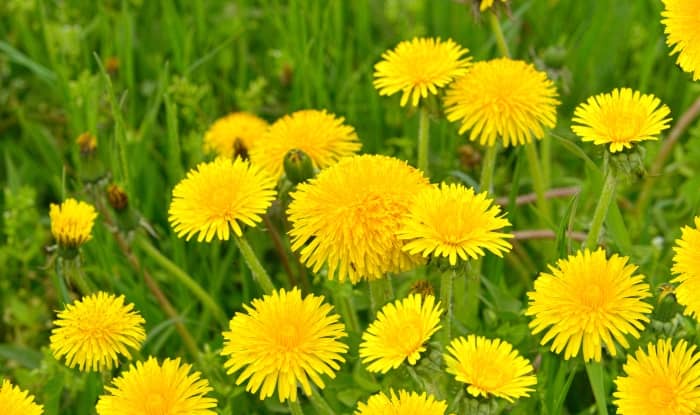
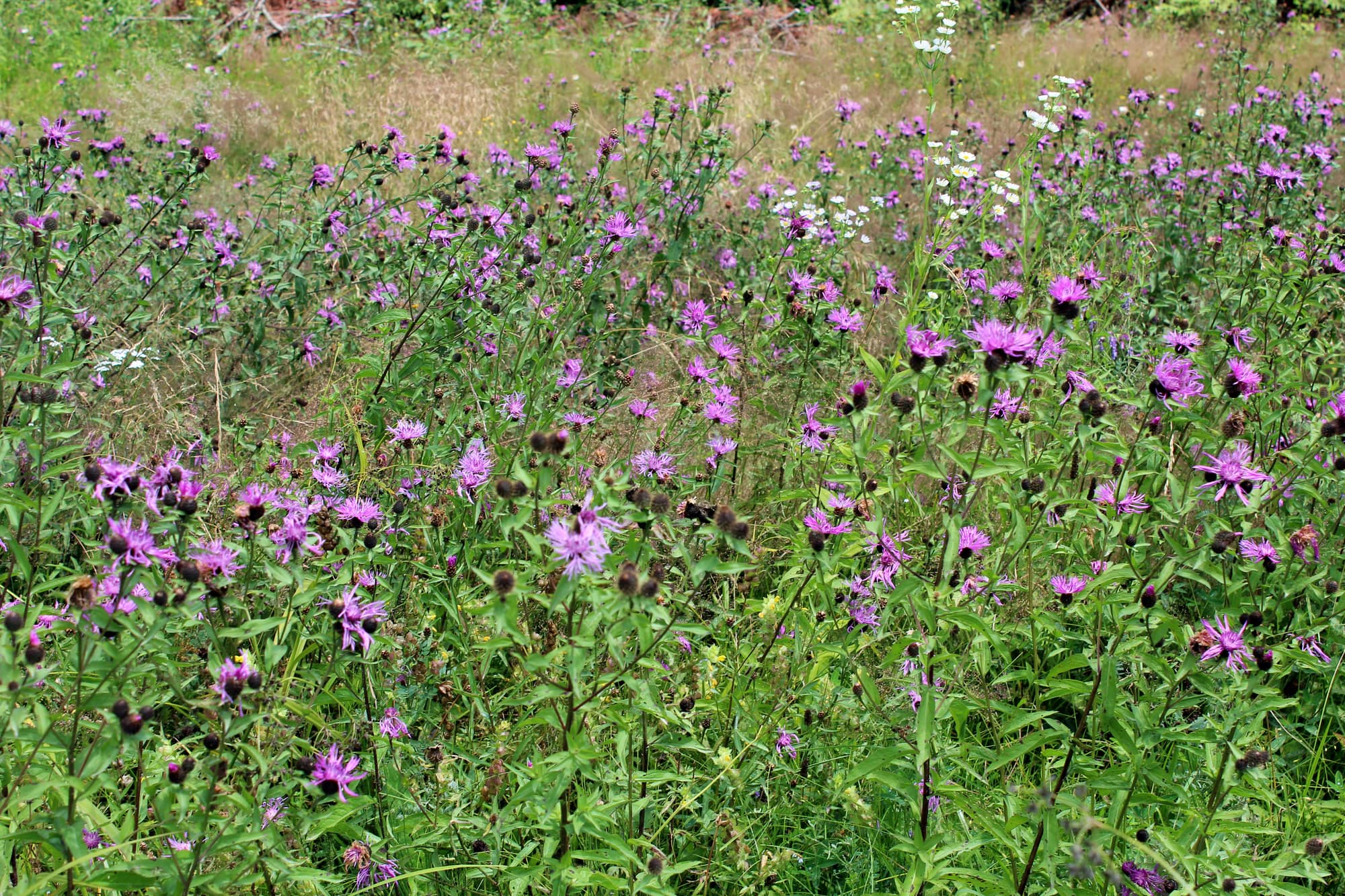
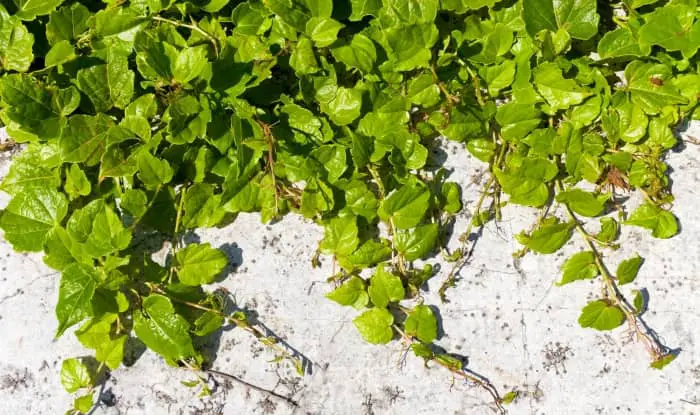
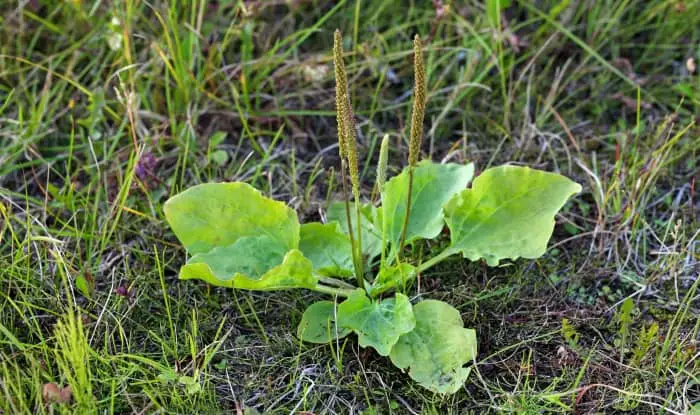
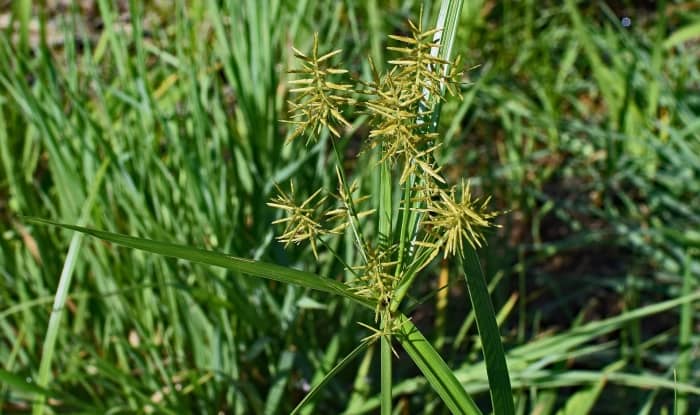
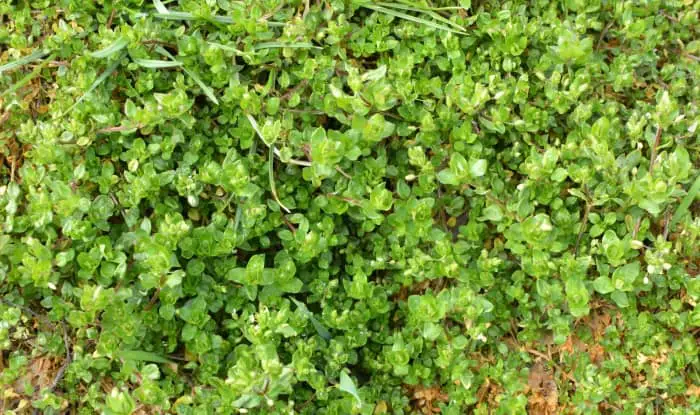
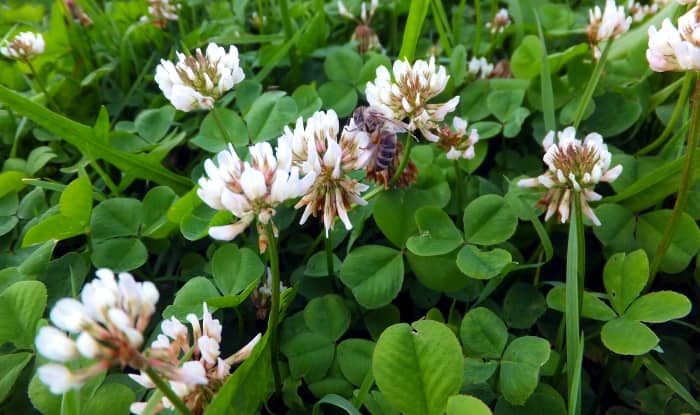
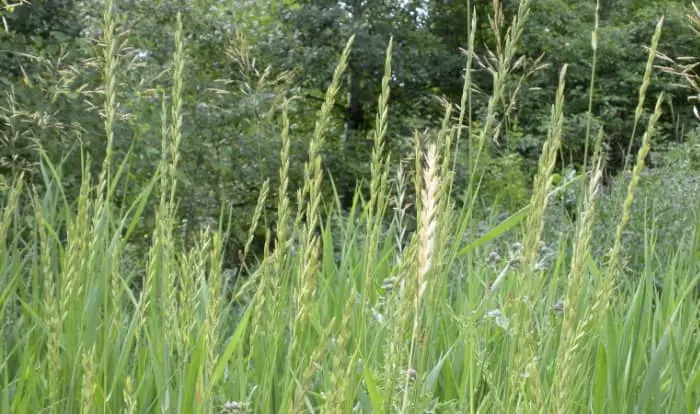

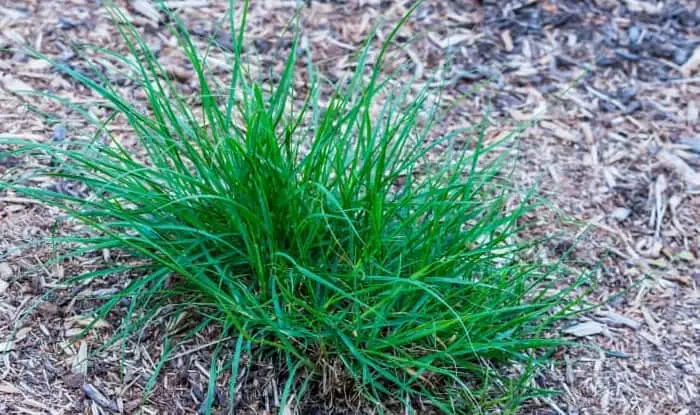
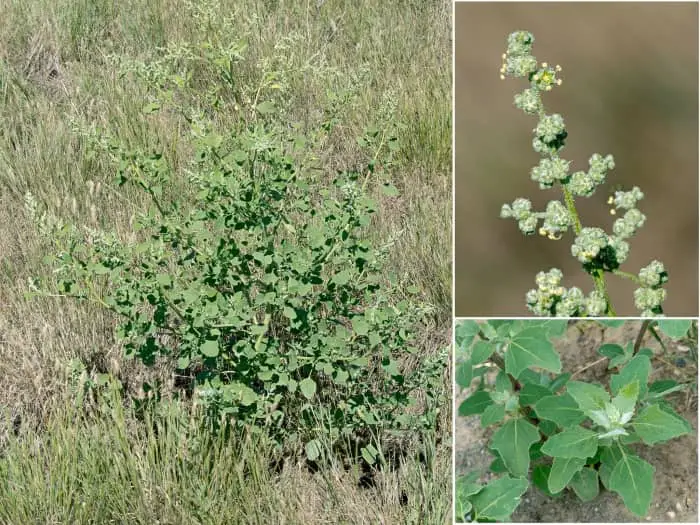
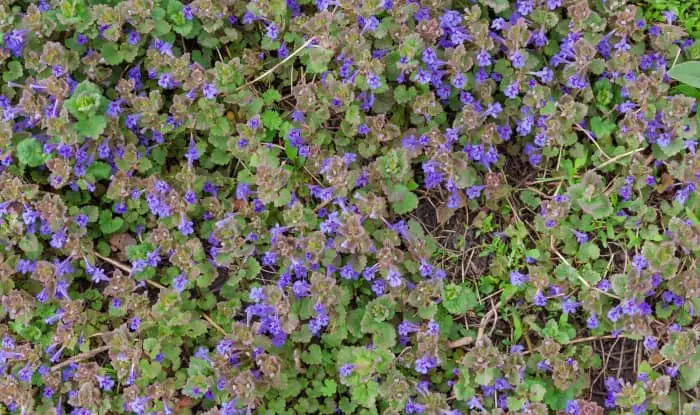
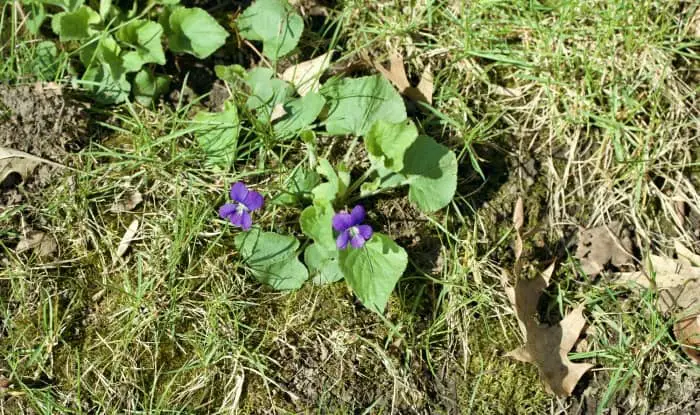
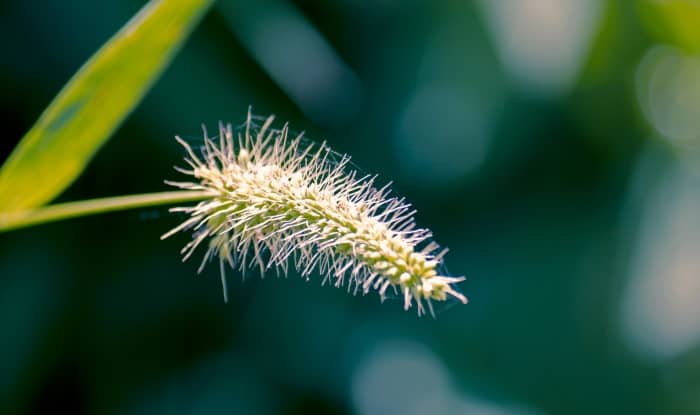
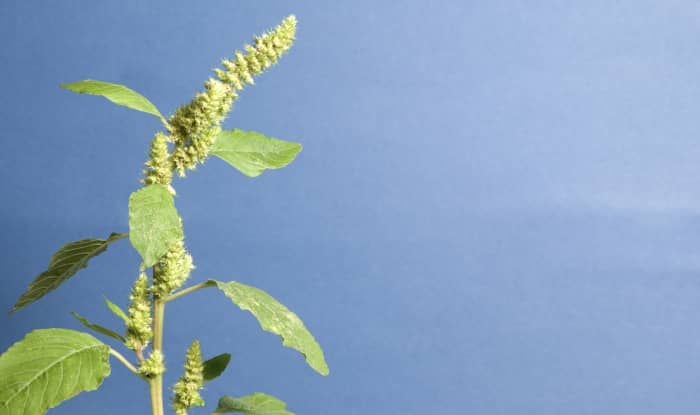
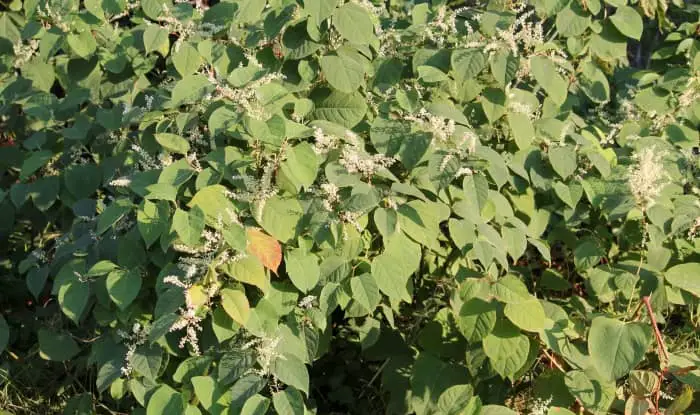
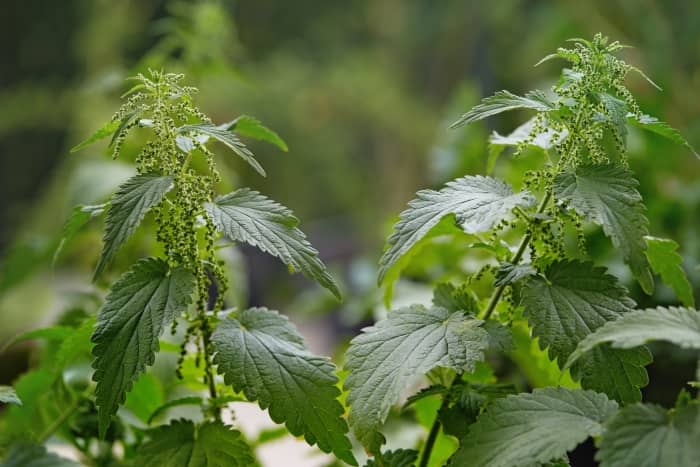
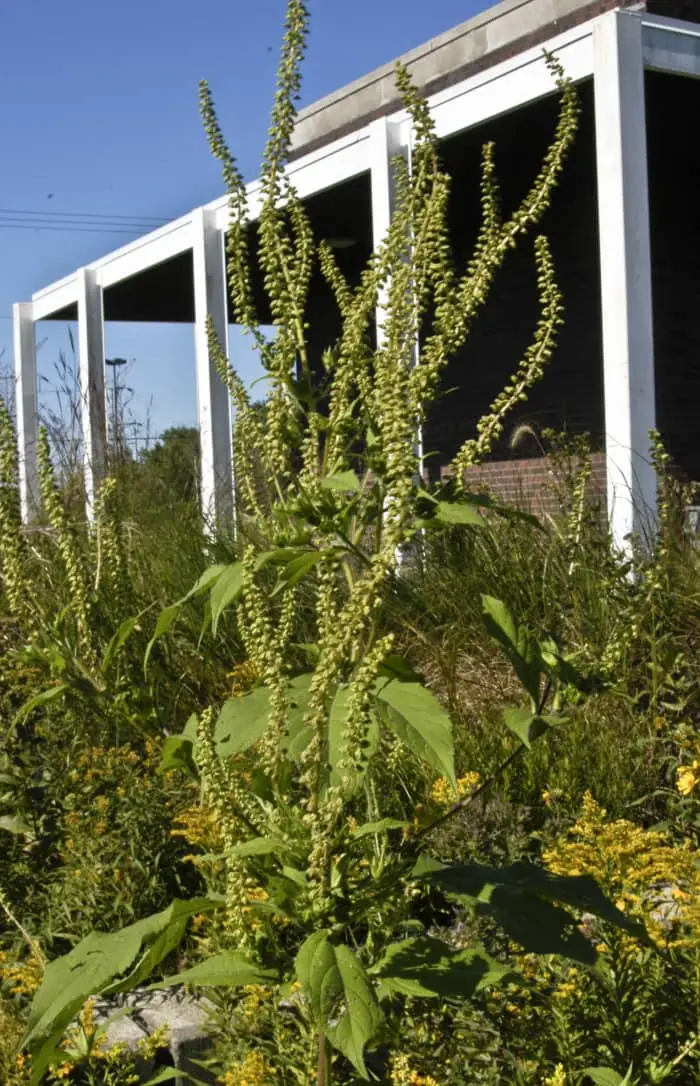
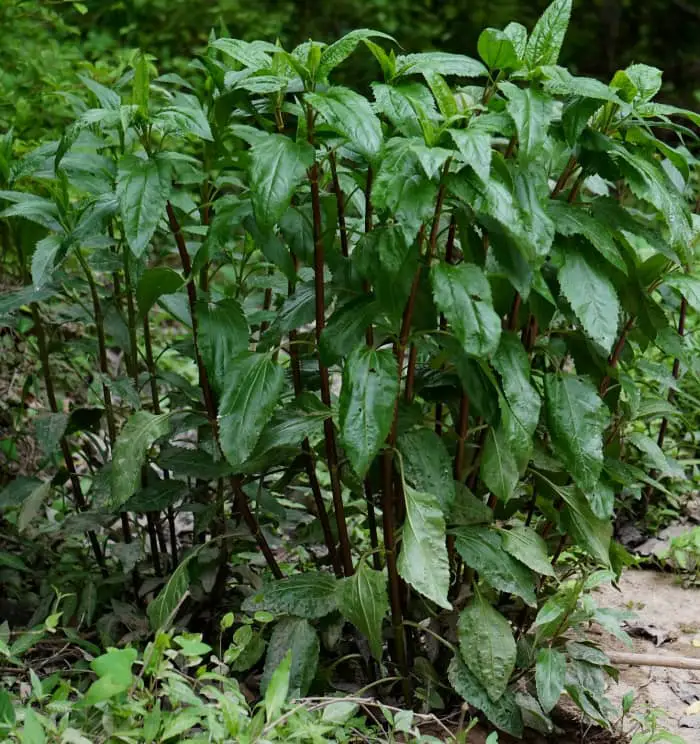
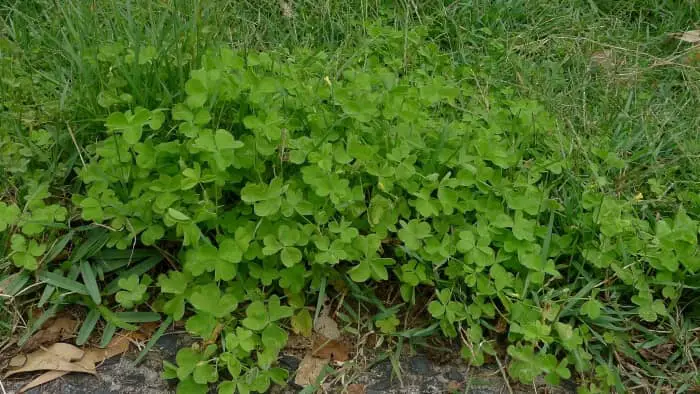
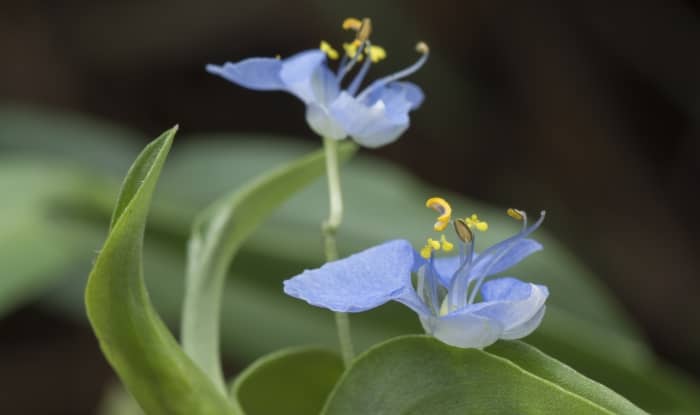
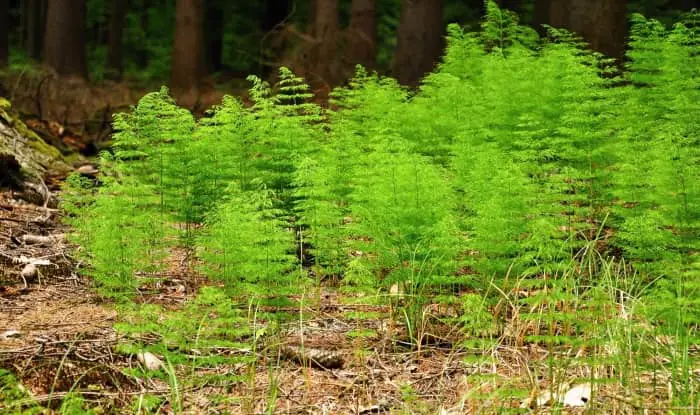
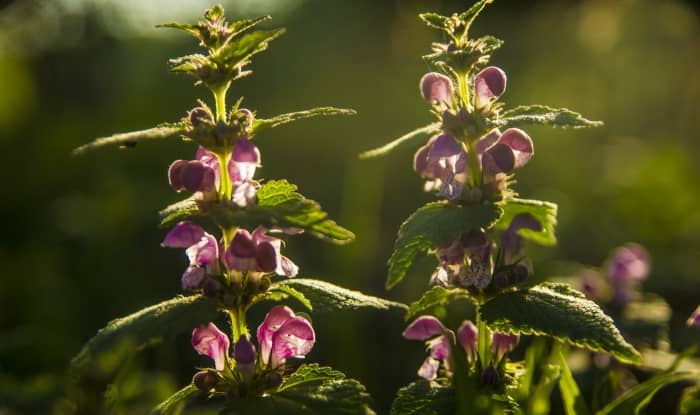
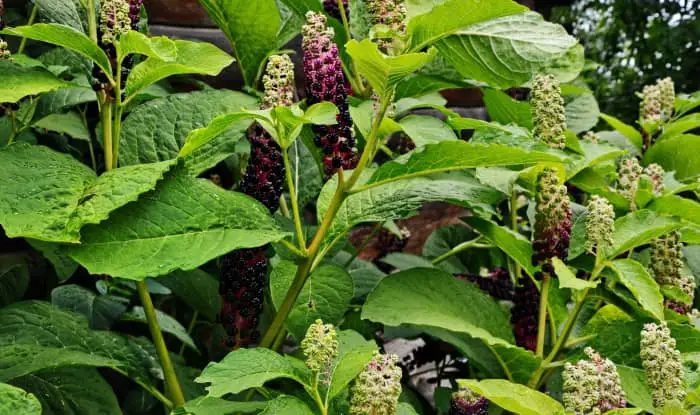

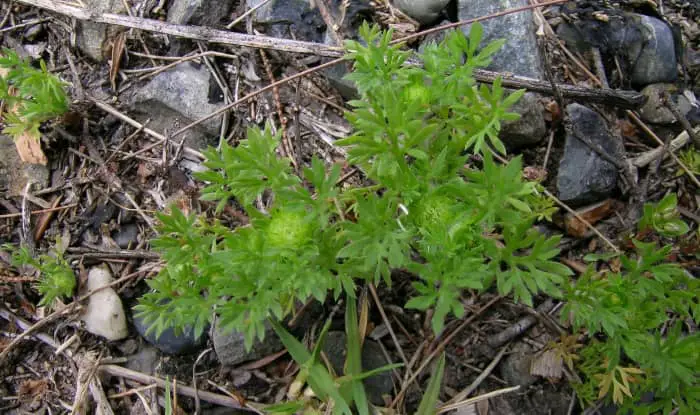

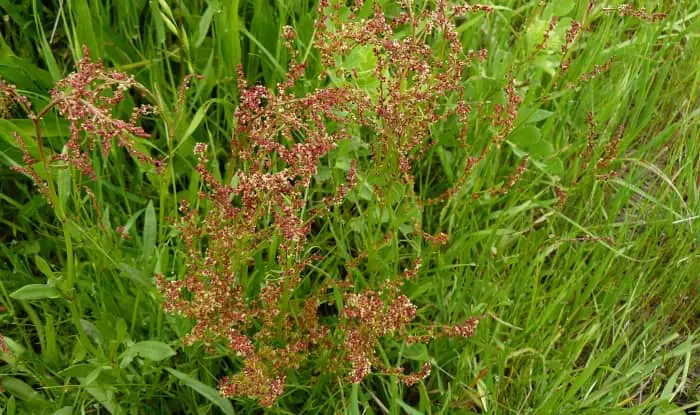
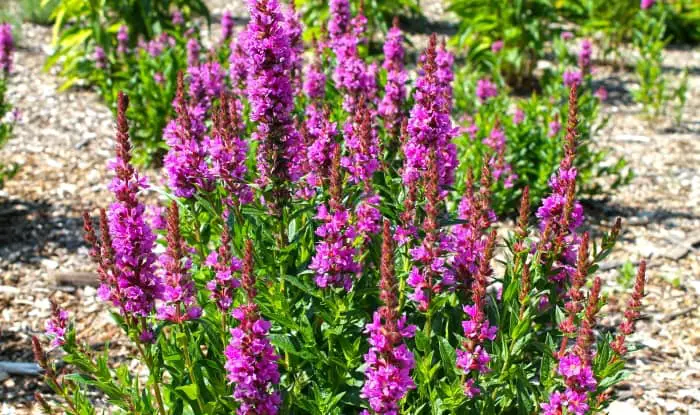


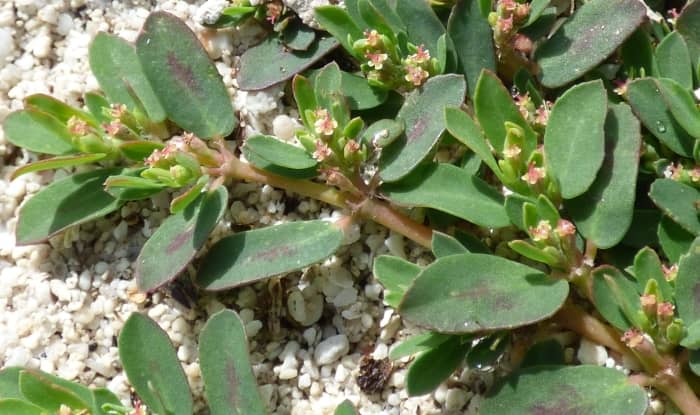
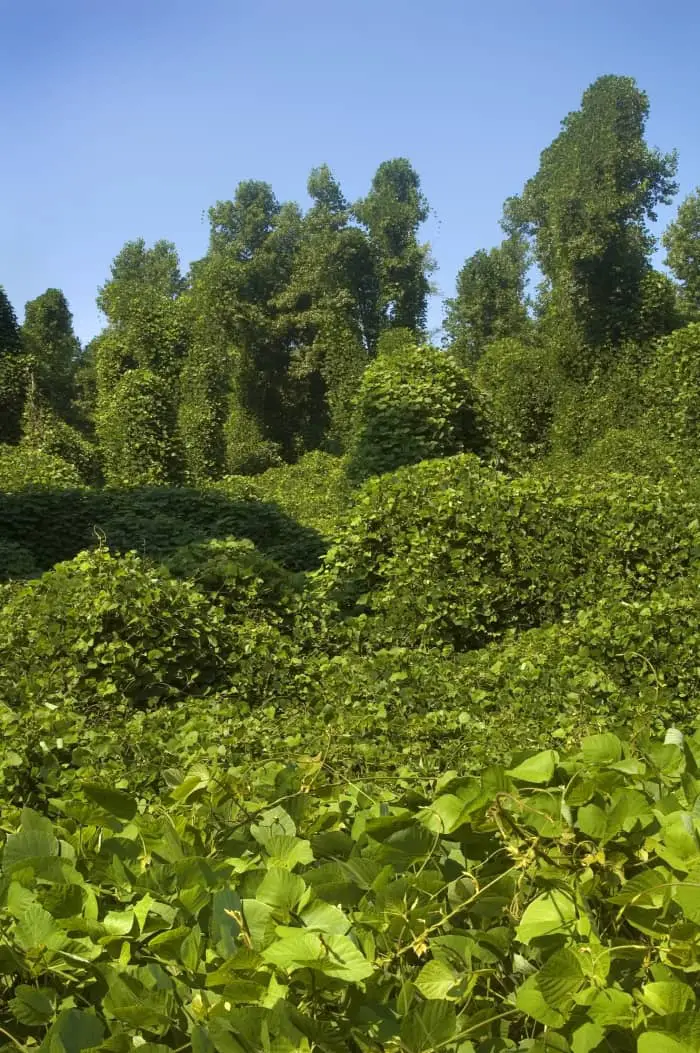
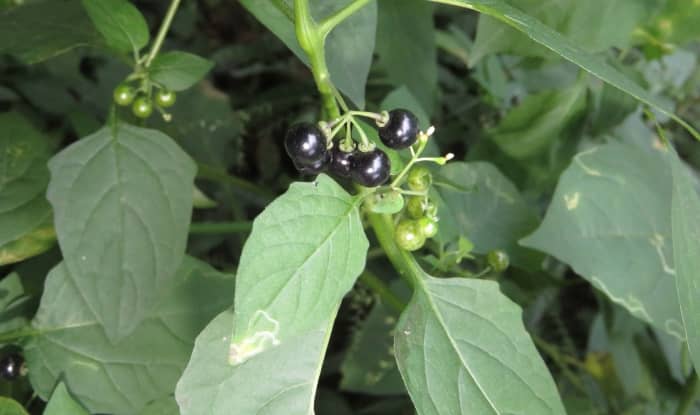
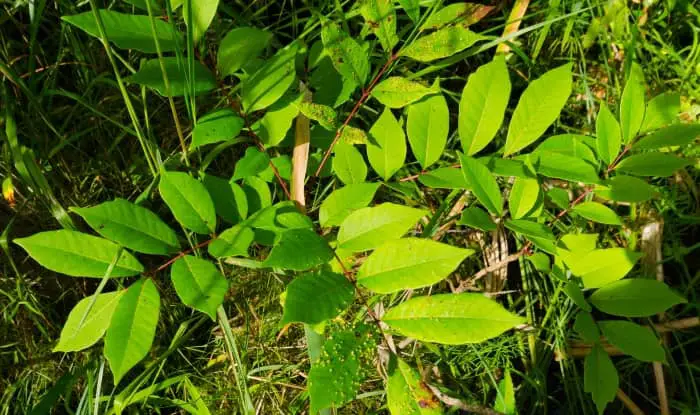
This is a very good list of the weeds in the neighbors’ dirt. I don’t say lawn or grass, because it’s *all* weeds.
Weeds are flowers we don’t want.
Just sayin
What is the weed that’s in the introductory picture? I don’t see it listed with the others but it looks like what I’m battling – similar leaf shape, lots of stems from a common base.
Hi Roger,
The plant in the image is pennywort.
It helped me identify some of my weeds, but not the viny one that drives be crazy. A lot of them that grow up the trees in my woods and the edge. I keep fight them….
What is the weed that is pictured to the left of the poison ivy image with 5 leaves. We have that vine growing into our yard and I find it hard to eliminate.
Hi Keith, it looks like Virginia creeper.
Good list of weeds.